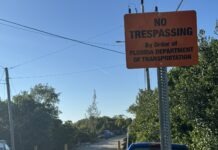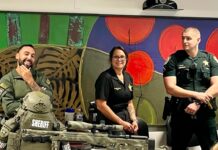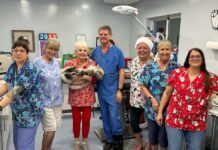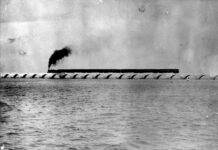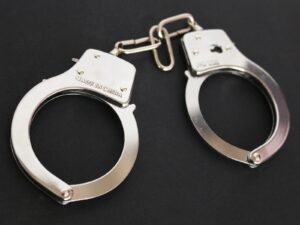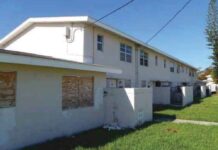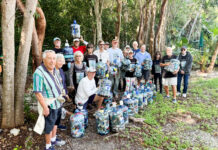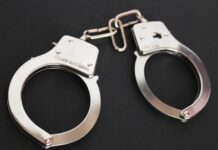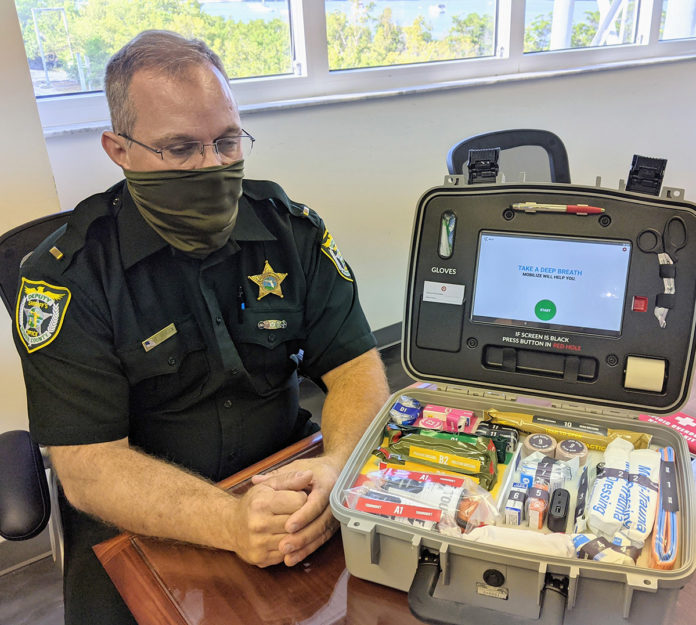
Monroe County Sheriff Rick Ramsay recently made it easier for his deputies to serve, protect and save lives in more ways than one.
Ramsay spent about $130,000 of confiscated drug dealer money to buy 100 new portable automatic external defibrillators (AEDs) and dozens of doses of NARCAN, which treat opioid and heroin overdoses.
“In the past 12 months alone, NARCAN has been used 19 times to save the life of someone who has overdosed on heroin or opioid pills,” Lt. James Sheagren said. “And that’s just the sheriff’s office-owned NARCAN. That figure doesn’t include NARCAN used by fire/rescue personnel. So yes, unfortunately, it’s been on the rise in recent years. Our guys have been carrying NARCAN for the past three years, and we just got a bunch of additional doses.”
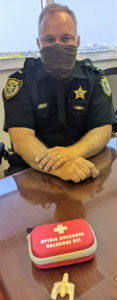
The easy-to-use nasal spray is dispersed into a patient’s nostrils, much like Afrin or other sinus sprays, Sheagren said. “It often takes two doses, one up each nostril, to revive a patient, but it works. I’ve seen people sit straight up, when 30 seconds before, they were purple and unresponsive.”
The AEDs are now included in every patrol car. The sheriff’s office has about 150 of them, while the school district and Key West police and fire/rescue units all have them as well.
“We used to have to switch out the AEDs when we came on duty, but that meant we wouldn’t have access to one if we came upon an emergency on our way to or from work,” Sheagren said, adding that all deputies have been trained on the AEDs, which include detailed and easy-to-follow instructions about where to place the adhesive pads on a patient’s chest. The kits also come with scissors in case clothing needs to be cut off, and a razor to shave a man’s chest.
“These units also recognize the weight of the patient, so they can be used on kids and adults. They basically jump start the heart to ‘reset’ it, like unplugging a computer and plugging it back in.”
As part of the negotiations for the AEDs, Ramsay also received — at no additional charge — 10 new mobile rescue boxes that contain dozens of first aid items to treat everything from a heart attack to a broken bone. The boxes also contain a talking touchscreen tablet that asks questions of the user about the emergency situation and directs them to a specifically labelled item in the box.
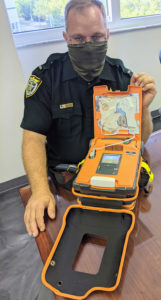
“For example, if someone has a severely bleeding injury, we open the box and click on the diagram of the body to show where the injury is located, and we indicate whether it’s a broken bone or a bleeding injury,” Sheagren explained. “The screen will ask questions about the injury, then direct the user to one of the tourniquets that’s included in the box. It will speak aloud instructions and show diagrams about how to properly position and tighten a tourniquet. And if the tourniquet doesn’t stop the bleeding, it will direct you to use a QuikClot specially treated bandage, which is also labelled and included in the box that can be refilled regularly with whatever items need to be replenished.”
The mobile rescue boxes have been placed at each sheriff’s substation, the three jails, courthouses and other facilities Keyswide.
“These AEDs, NARCAN and rescue boxes will help deputies get a head start on life-saving actions,” Sheriff Ramsay said. “We certainly can’t replace our friends at fire/rescue, but often a deputy is the first on the scene of any incident, and in these situations, every minute counts.”
Ramsay emphasized that the $130,000 spent on the new safety gear came from seized drug money, and not the taxpayers.
“Our goal continues to be to provide the best level of service to all our citizens, not just in terms of criminal investigations, but in life-safety situations as well,” Ramsay said.




